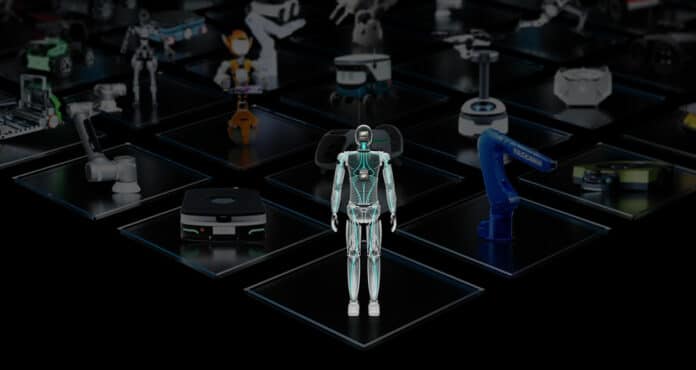NVIDIA has announced Project GR00T, a general-purpose foundation model for humanoid robots designed to further its work driving breakthroughs in robotics and embodied AI.
The company also unveiled a new computer, Jetson Thor, for humanoid robots based on the NVIDIA Thor system-on-a-chip (SoC), as well as significant upgrades to the NVIDIA Isaac robotics platform, including generative AI foundation models and tools for simulation and AI workflow infrastructure.
“Building foundation models for general humanoid robots is one of the most exciting problems to solve in AI today,” said Jensen Huang, founder and CEO of NVIDIA. “The enabling technologies are coming together for leading roboticists around the world to take giant leaps towards artificial general robotics.”
Robots powered by GR00T, which stands for Generalist Robot 00 Technology, will be designed to understand natural language and emulate movements by observing human actions. They quickly learn coordination, dexterity, and other skills that allow them to navigate, adapt, and interact with the real world. During his GTC keynote, Huang showcased several of these robots completing a variety of tasks.
The Jetson Thor computing platform is capable of performing complex tasks and interacting safely and naturally with people and machines. The platform’s modular architecture is optimized for performance, power, and size. It has a next-generation GPU based on the NVIDIA Blackwell architecture, which can deliver 800 teraflops of 8-bit floating point AI performance to run multimodal generative AI models like GR00T.
NVIDIA is building a comprehensive AI platform for humanoid robot companies, including 1X Technologies, Agility Robotics, Apptronik, Boston Dynamics, Figure AI, Fourier Intelligence, Sanctuary AI, Unitree Robotics, and XPENG Robotics.
The Isaac tools used by GR00T have the capability to develop new foundation models for any robot embodiment in any environment. Among these tools are Isaac Lab for reinforcement learning and OSMO, a compute orchestration service. These tools are essential in developing embodied AI models and require a massive amount of real and synthetic data. The Isaac Lab, which is a GPU-accelerated and performance-optimized application built on Isaac Sim, can run thousands of parallel simulations for robot learning.
Additionally, to manage robot development workloads across various computing systems, OSMO coordinates the data generation, model training, and software/hardware-in-the-loop workflows across distributed environments.
The pace of development in the humanoid robotics space is indeed remarkable, and it is exciting to see the progress being made. Companies like NVIDIA are at the forefront of this technology, and their platforms and hardware, such as GR00T, are sure to play a significant role in shaping the future of robotics.
